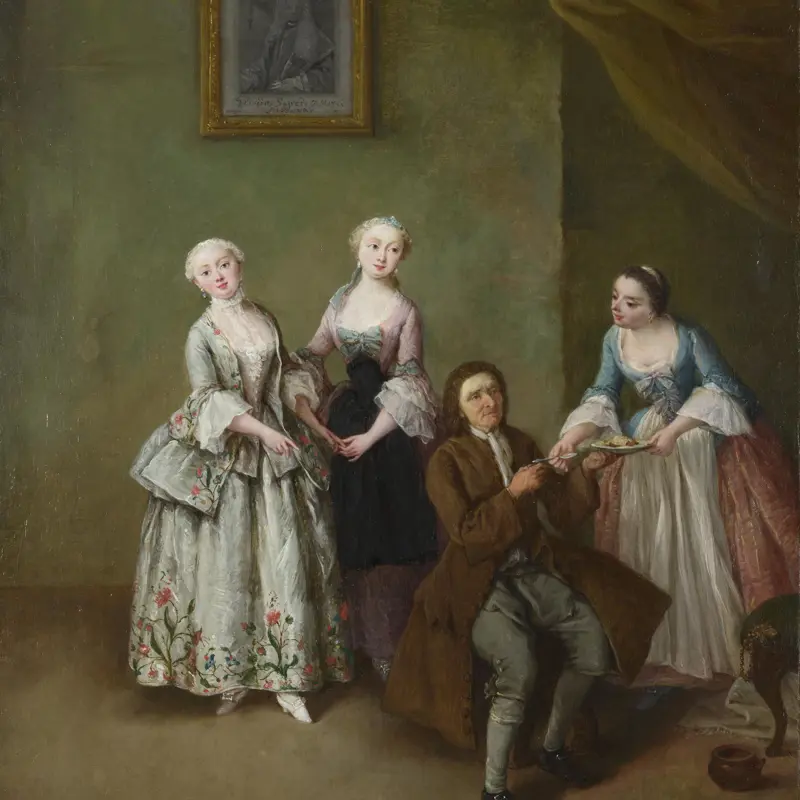Pietro Longhi, 'Exhibition of a Rhinoceros at Venice', probably 1751
About the work
Overview
In 1751, a rhinoceros known as Miss Clara was publicly exhibited at the Venice Carnival, creating a sensation across Europe. She was the subject of poems, paintings, tapestries, medals and sculptures; ladies even styled their hair in the shape of a horn. Pietro Longhi painted this picture around the same time.
In a rather solemn scene, Miss Clara stands in a simple enclosure, languidly munching on hay. She no longer has her horn – the showman holds it in one hand, along with a whip to encourage the animal to move for the spectators, many of whom have masked faces. The background is limited to one wooden wall, but our attention is drawn to different textures: the black lace worn by the woman in the front and the silk dresses of those behind, and the rhino’s rough, dark skin.
Key facts
Details
- Full title
- Exhibition of a Rhinoceros at Venice
- Artist
- Pietro Longhi
- Artist dates
- 1701 - 1785
- Date made
- probably 1751
- Medium and support
- oil on canvas
- Dimensions
- 60.4 × 47 cm
- Acquisition credit
- Bought, 1881
- Inventory number
- NG1101
- Location
- Room 33
- Collection
- Main Collection
- Frame
- 18th-century Venetian Frame
Provenance
Additional information
Text extracted from the ‘Provenance’ section of the catalogue entry in Michael Levey, ‘National Gallery Catalogues: The Seventeenth and Eighteenth Century Italian Schools’, London 1986; for further information, see the full catalogue entry.
Exhibition history
-
2021Miss Clara and the Celebrity Beast in Art 1500-1860The Barber Institute of Fine Arts12 November 2021 - 27 February 2022
Bibliography
-
1956Levey, Michael, National Gallery Catalogues: The Eighteenth Century Italian Schools, London 1956
-
1986Levey, Michael, National Gallery Catalogues: The Seventeenth and Eighteenth Century Italian Schools, London 1986
-
2001
C. Baker and T. Henry, The National Gallery: Complete Illustrated Catalogue, London 2001
About this record
If you know more about this work or have spotted an error, please contact us. Please note that exhibition histories are listed from 2009 onwards. Bibliographies may not be complete; more comprehensive information is available in the National Gallery Library.





